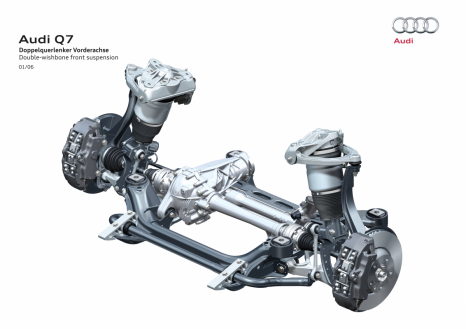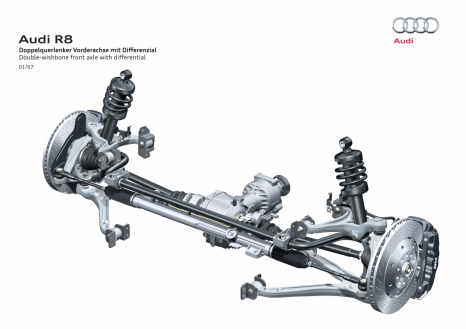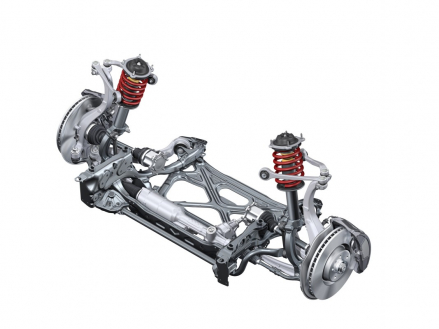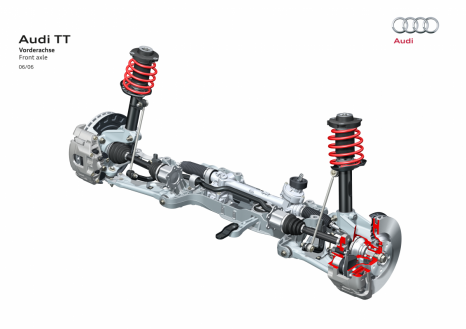Front suspension
The model line-up from Audi is extensive, and the same applies for the layout of the wheel suspensions. Three different basic constructions are used for the front suspension.
The compact A1 (Combined fuel consumption in l/100 km: 7.1 – 3.8; Combined CO2-emissions in g/km: 162 - 99)**, the A3 and the TT are built on a classic MacPherson construction with lower triangular wishbones. Together with the rotatable suspension/damper strut, the control arm is essentially responsible for controlling the wheel. It is attached to the subframe at two points: the rigid front bearing absorbs the lateral forces, and the somewhat softer rear bearing absorbs the longitudinal forces. The MacPherson suspension requires little space, allows lots of spring travel and is extremely compact and lightweight.
The full-size Q7 SUV (Combined fuel consumption in l/100 km: 10.7 – 7.2; Combined CO2-emissions in g/km: 249 - 189)** and the R8 high-performance sports car use a double-wishbone suspension in the front. This construction originally used in motor sport places two wishbones one over the other. The wheel control and suspension are separated from one another, and the suspension/damper strut is supported by the lower transverse link. The detailed geometry of the double-wishbone suspension is very different in the Q7 and the R8. In both models, however, it allows a high degree of kinematic freedom, ensuring highly precise wheel control.
In all other model lines with longitudinally mounted engines, Audi uses five-link wheel suspensions in which the wishbones are replaced by individual links. One support link and one control arm form the lower plane, and two control arms form the upper plane. A track rod serves as the fifth link. The five-link front suspension handles longitudinal and lateral forces separately. The bearings are rigid in a lateral direction to promote sporty precision. Their response in the longitudinal direction is smooth and resilient. In addition, the sophisticated construction provides considerable advantages in terms of steering feedback – when tracking smoothly, initiating a steering maneuver or suppressing propulsive power and disturbance forces.
The links and pivot bearings are made from aluminum in most suspension designs from Audi. This ensures low unsprung masses, highly precise wheel control and a safe crash behavior. The anti-roll bar, usually made from a high-strength tube, saves weight, as does the subframe of high-strength steel or aluminum.
**Figures depend on the tires/wheels used.
Status: 2011



